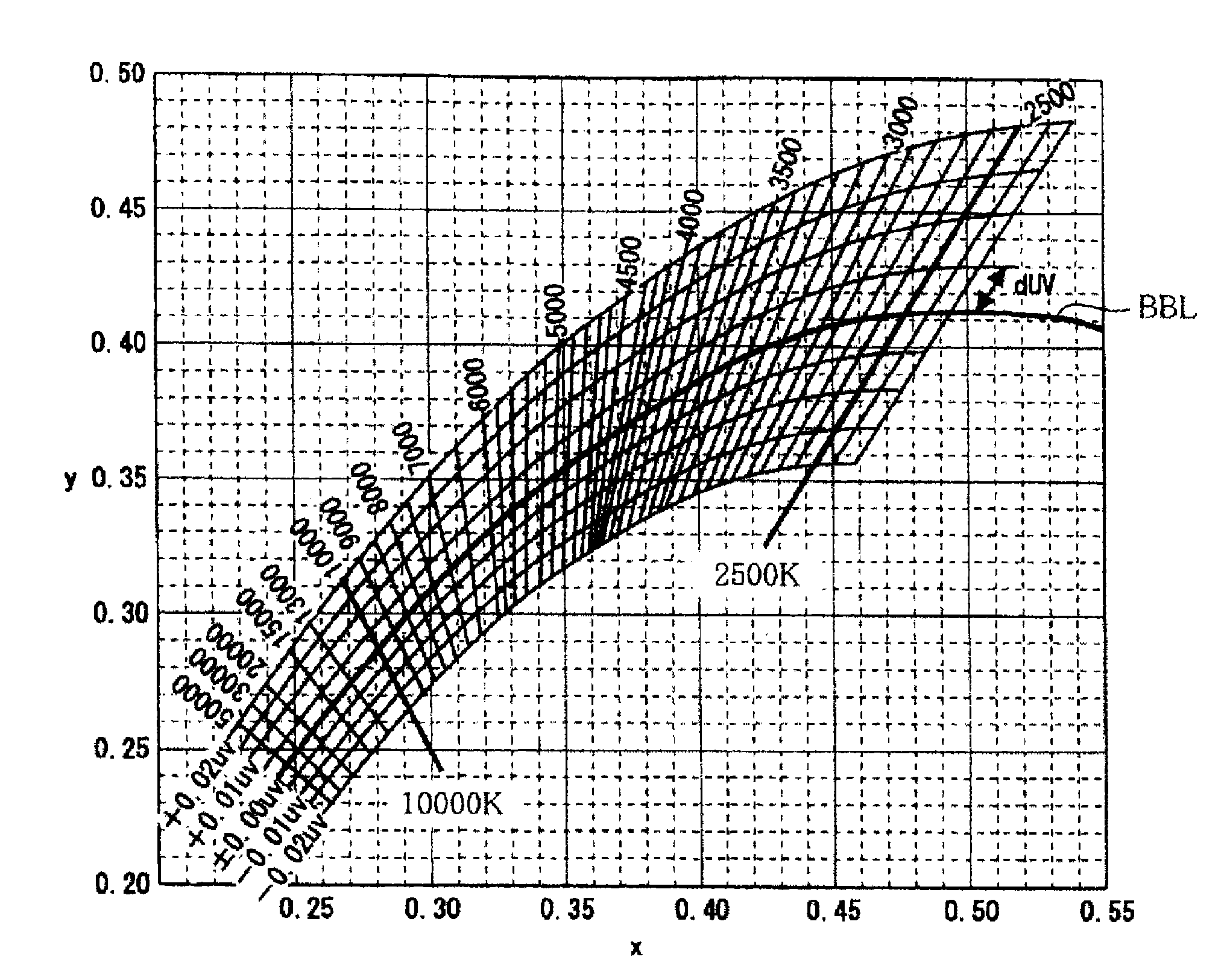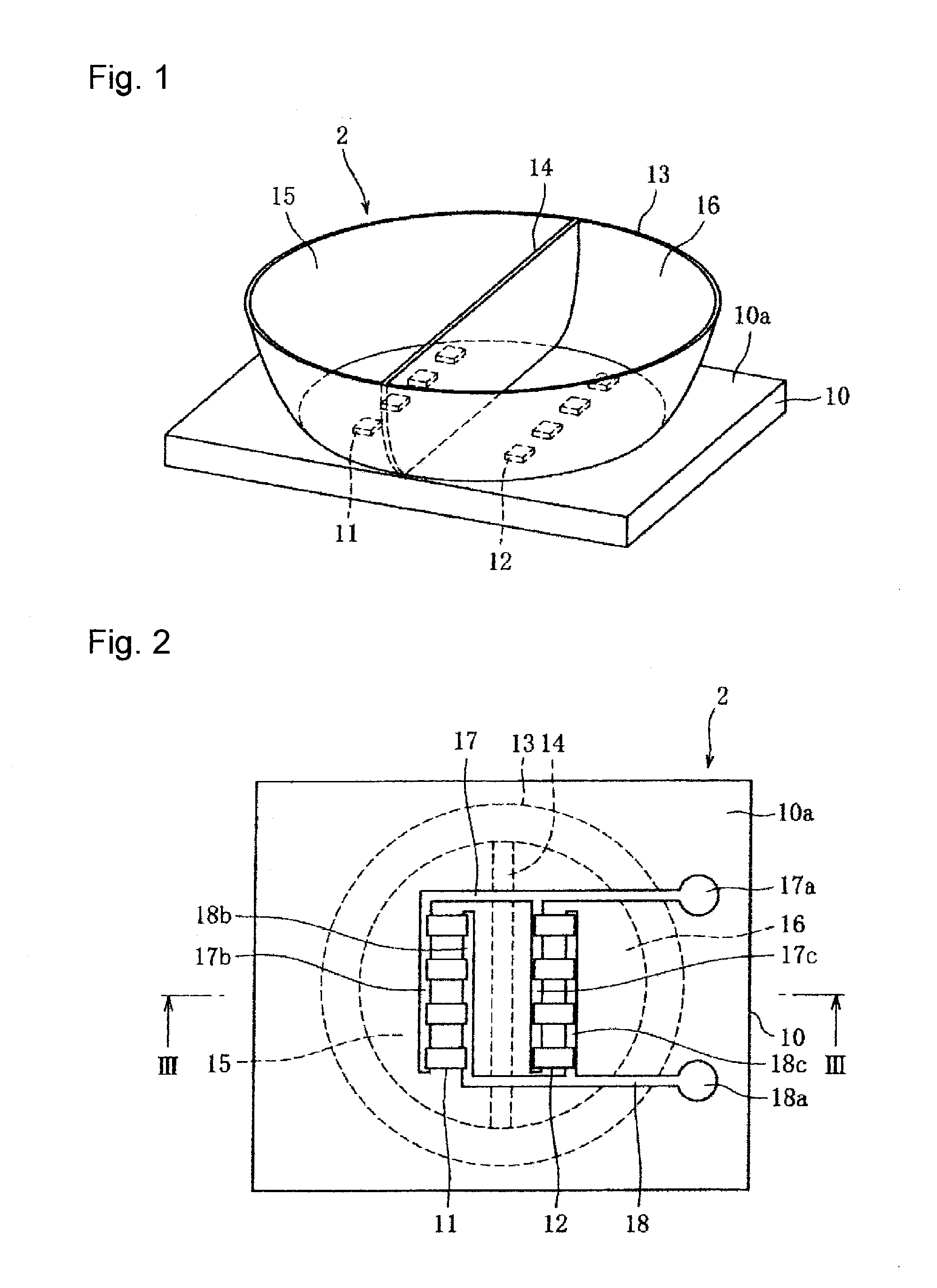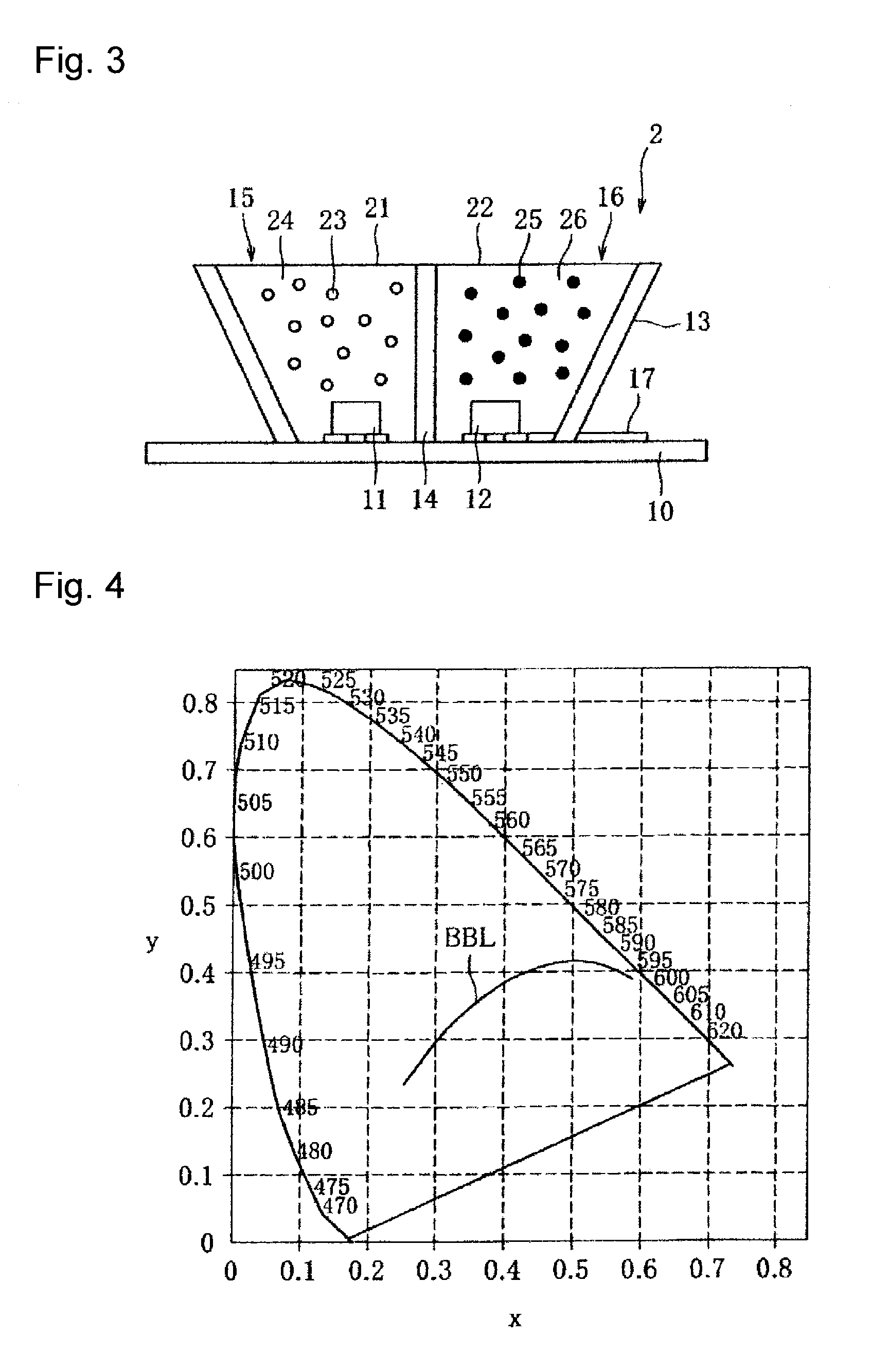LED light- emitting device and indicator provided with the LED light emitting device
a technology of led light emitting device and indicator, which is applied in the direction of lighting and heating apparatus, light source combinations, instruments, etc., can solve the problems of low color rendering properties, which become important in normal illumination, and achieve high distinguishability
- Summary
- Abstract
- Description
- Claims
- Application Information
AI Technical Summary
Benefits of technology
Problems solved by technology
Method used
Image
Examples
application example 1
[0129]FIG. 10 is a configuration diagram schematically showing Application Example 1 wherein the LED light emitting device 1 of the present invention is applied to an indicator 150 of a temperature-setting dial (operation member) 140 for an air conditioner (electronic device) 100 to be used for e.g. a vehicle. The temperature-setting dial 140 is rotatable in a range from the lower limit position shown by the indication “LOW” to the upper limit position shown by the indication “HIGH”. On the top surface of the temperature-setting dial 140, an indicator 150 formed in a ring shape is provided, and for illumination of this indicator 150, radiation light of the LED light emitting device 1 of the present invention is used. That is, the temperature-setting dial 140 corresponds to the operation member 40 in the above-described embodiment, and the indicator 150 corresponds to the indicator 50. Accordingly, in this application example, the physical quantity to be set by using the temperature-...
application example 2
[0134]In the foregoing embodiment and Application Example 1, it is so designed that the indication controller section 51 controls the drive controller section 32 depending upon the position of the operation member 40 or the temperature-setting dial 140, however, it may be designed so that the indication color of the indicator is changed depending upon the degree of the physical quantity which is variously changed depending upon e.g. surroundings instead of the physical quantity to be artificially set by e.g. the operation member 40 or the temperature-setting dial 140. In such a case, a sensor (not shown) to detect the objective physical quantity, is used instead of the operation member 40 or the temperature-setting dial 140. An example for application to such an indicator will be described below as Application Example 2.
[0135]FIG. 11 is a configuration diagram schematically showing an example wherein the LED light emitting device 1 of the present invention is applied to an indicator...
PUM
 Login to View More
Login to View More Abstract
Description
Claims
Application Information
 Login to View More
Login to View More - R&D
- Intellectual Property
- Life Sciences
- Materials
- Tech Scout
- Unparalleled Data Quality
- Higher Quality Content
- 60% Fewer Hallucinations
Browse by: Latest US Patents, China's latest patents, Technical Efficacy Thesaurus, Application Domain, Technology Topic, Popular Technical Reports.
© 2025 PatSnap. All rights reserved.Legal|Privacy policy|Modern Slavery Act Transparency Statement|Sitemap|About US| Contact US: help@patsnap.com



